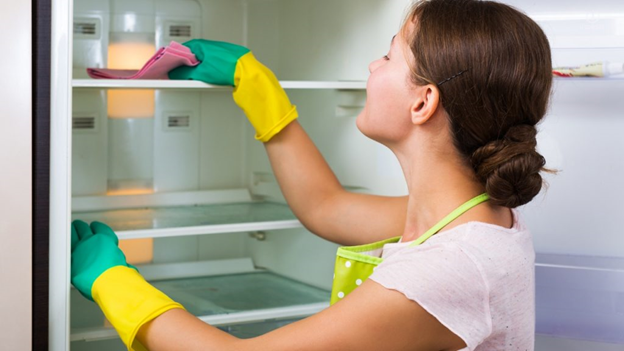In the pursuit of a well-maintained home, the refrigerator arguably stands as one of the most critical appliances, yet it’s often overlooked until problems arise. Regular refrigerator maintenance is not only crucial for ensuring that your food stays safely chilled or frozen, but it’s also pivotal in extending the lifespan of your appliance, improving energy efficiency, and avoiding costly repairs. By dedicating a little time and effort to maintenance, you can ensure your refrigerator continues to serve you well for years to come. Here, we delve into some quick and easy refrigerator maintenance tips that will keep your unit running smoothly without breaking a sweat!
1. Clean the Condenser Coils
DIY Tip: Unplug your refrigerator and locate the condenser coils either behind or beneath your unit. Using a refrigerator coil brush or a soft-bristle brush attachment on your vacuum, gently remove the buildup of dust and debris. Aim to do this at least twice a year or more frequently if you have pets.
2. Check and Clean the Door Seals
The door seals (or gaskets) play a vital role in maintaining the interior temperature of your refrigerator. A loose or damaged seal can lead to cold air escaping, causing your fridge to work harder to keep cool, which again, hikes up energy costs and strains the appliance.
DIY Tip: Use a solution of warm water and mild dish soap to clean the seals, wiping away any grime or food residue. After cleaning, conduct a dollar bill test – close the door on the bill; if it slips out easily or without any resistance, it might be time to replace the seals. You can find refrigerator parts at trusted Wholesale Appliance Supplies. Replacing parts is easy, so you don’t have to call a repairman for each one.
3. Keep the Interior and Exterior Clean
Maintaining a clean interior not only helps with hygiene and odor control but also ensures efficient airflow. Overflowing shelves can block vents, leading to uneven cooling. Meanwhile, keeping the exterior clean, especially the top of the fridge, prevents excessive dust from getting sucked into the components.
DIY Tip: Once every month or two, unplug your refrigerator and empty it out. Clean the shelves and bins with warm, soapy water and wipe the interior with a solution of water and baking soda. Don’t forget to clean the exterior with a damp cloth and mild detergent.
4. Defrost, If Necessary
If your refrigerator is not frost-free, excessive frost buildup can be a sign of energy inefficiency and can prevent the door from sealing properly.
DIY Tip: Regularly check your freezer for frost accumulation. If it exceeds 1/4 inch, it’s time to defrost. Unplug the unit, remove all food, and allow the ice to melt away. Speed up the process with a hairdryer set on low, but avoid scraping the surfaces with sharp objects.
5. Inspect and Replace the Water Filter
For refrigerators equipped with water dispensers or ice makers, the water filter plays a crucial role in providing clean, fresh-tasting water. Over time, these filters can become clogged with contaminants and need to be replaced.
DIY Tip: Check your manufacturer’s guidelines on how often to replace your water filter, typically every 6 months. It’s usually a simple task that involves turning the filter a quarter turn to the left and pulling it out, then reversing the process to install a new one.
6. Monitor Temperature Settings
Keeping your refrigerator at the optimal temperature is essential for food safety and energy efficiency. The refrigerator compartment should be at or below 40°F (4°C), while the freezer should be at 0°F (-18°C).
DIY Tip: Invest in a refrigerator thermometer to ensure accurate readings and adjust the settings accordingly. Avoid placing hot food directly into the refrigerator as it can raise the internal temperature and force the unit to work harder.
7. Be Mindful of Loading
How you load your refrigerator can impact its efficiency. Ensure not to overpack, as this can restrict airflow and make the appliance work harder. Similarly, ensure the vents are not blocked by tall items.
DIY Tip: Organize your fridge in a way that allows for free airflow. Keep taller items at the back and avoid stacking or overcrowding shelves.
In conclusion, implementing these simple yet effective maintenance tips can significantly improve the performance and extend the lifespan of your refrigerator. Not only will you save on energy bills and avoid costly repairs, but you will also ensure your food stays fresh and healthy. Remember that a little attention goes a long way when it comes to refrigerator upkeep.













